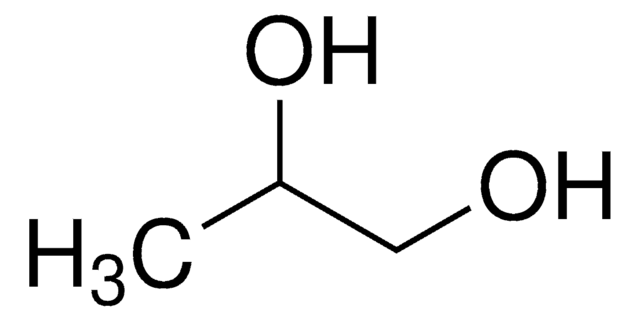533734
1,3-Propanediol
≥99.6%
Synonym(s):
1,3-Dihydroxypropane, Trimethylene glycol
About This Item
Recommended Products
vapor pressure
0.8 mmHg ( 20 °C)
9.8 mmHg ( 100 °C)
Assay
≥99.6%
impurities
<0.1% water
refractive index
n20/D 1.440 (lit.)
surface tension
46.2 dyn/cm, 20 °C
viscosity
52 cP(20 °C)(lit.)
bp
214 °C/760 mmHg (lit.)
mp
−27 °C (lit.)
solubility
H2O: soluble
density
1.053 g/mL at 25 °C (lit.)
anion traces
chloride (Cl-): <0.5 ppm
SMILES string
OCCCO[H]
InChI
1S/C3H8O2/c4-2-1-3-5/h4-5H,1-3H2
InChI key
YPFDHNVEDLHUCE-UHFFFAOYSA-N
Looking for similar products? Visit Product Comparison Guide
Application
Storage Class Code
10 - Combustible liquids
WGK
WGK 1
Flash Point(F)
Not applicable
Flash Point(C)
Not applicable
Personal Protective Equipment
Regulatory Information
Choose from one of the most recent versions:
Already Own This Product?
Find documentation for the products that you have recently purchased in the Document Library.
Our team of scientists has experience in all areas of research including Life Science, Material Science, Chemical Synthesis, Chromatography, Analytical and many others.
Contact Technical Service





